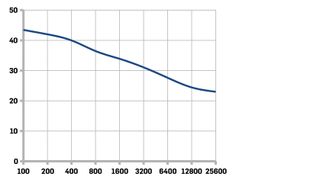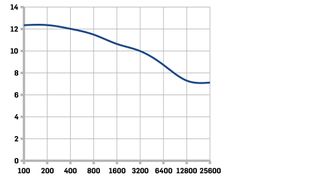Announced back in 2013, the Nikon Df was a radical departure from modern D-SLR design of the time. It took its inspiration from Nikon’s classic film SLRs from the 1970s and 1980s, right down to the box-like body, chisel-edged pentaprism, leatherette panels, and even the old-style Nikon logo.
Nikon’s pre-launch teaser ads built up the concept of ‘pure photography’, and the Nikon Df was aimed at those who want to rediscover the pleasure of the whole photographic process, not just the end result. The Df was not just a tool, it was an experience.
In the years since, the Big N has launched both the Nikon Zf and Nikon Z fc – mirrorless iterations of the Df, featuring the new Z mount with a full frame and APS-C sensor respectively. Check out our Nikon Zf vs Z fc comparison to see all the differences between these new models.
Specifications
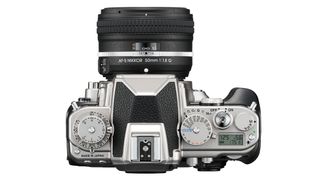
Sensor: 16.2MP FX (36x23.9mm) full-frame CMOS sensor
Crop factor: 1x
Memory: 1x SD/SDHC/SDXC
Viewfinder: Eye-level pentaprism, 100% field of view, 0.7x magnification
Video resolution: None
ISO range: ISO100-12800 (expandable to ISO50 -204800)
Autofocus points: 39 (9 cross-type)
Max burst rate: 5.5fps
Buffer capacity: 100 Normal quality JPEGs, 100 Fine, or 37 RAW (14-bit)
LCD screen: 3.2-inch, 921k-dot
Shutter speeds: 1/4000 sec-30 secs, bulb
Weight: Approx. 710g (body only)
Dimensions: 143x110x66mm
Power supply: Li-ion EN-EL14a battery
Less than spec-tacular?
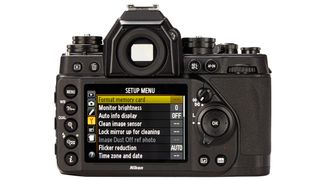
The specifications was the main bone of contention for the doubters. On paper, the Df lags behind both Nikon's other full-frame DSLRs of the time - D610 and D800, while costing significantly more than both of them. The Df used the 16.2-megapixel sensor from Nikon’s then flagship pro SLR, the D4. It was a curious choice because the D4 was built for speed rather than resolution, sacrificing megapixels for the then impressive 11fps frame rate in continuous shooting mode.
The Df offered a more pedestrian 5.5fps. It’s not bad by consumer DSLR standards, but leaves us wondering whether Nikon’s 24-megapixel full-frame sensor would have been the more logical choice.
The Df does, however, inherit the D4’s extraordinary ISO range, which is ISO100-12800 in standard mode and ISO50-204800 in ‘expanded’ mode. It should produce excellent image quality in low light – but be warned, there’s no built-in flash, so it may need to.

There’s no movie mode, either. Nikon claims this capability has been left out entirely, and the Df can’t be hacked to reveal a ‘hidden’ movie mode. It’s clearly a deliberate omission, to fit in with the retro style, rather than a technical issue.
The autofocus could prove a mild disappointment too. The Df uses the 39-point Multi-CAM 4800 AF sensor found in the D610, which is serviceable enough but not quite up to the same standard as Nikon’s professional 51-point AF system.
And that’s not all. Fans of classic Nikons might have been hoping for an all-metal body, but the Df followed the design of the D7000, D7100 and D610, with a polycarbonate chassis and magnesium alloy top and back plates. It was not Nikon’s toughest camera, then, but in reality it was plenty tough enough for its target users, and it is dust and moisture-sealed to the same very good standard as the D800.
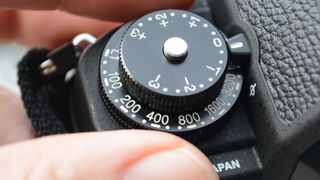
Back to the future
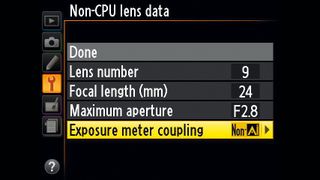
Concentrating on the specifications highlights a few of the Df’s potential shortcomings, but it has some considerable strengths, too.
The design was not simply a nod to a past era; the Df’s lens mount includes a collapsible metering coupling lever that enables old non-AI Nikkor lenses to be mounted directly onto the camera. Even Nikon’s pro DSLRs couldn't do this. Full-aperture metering is possible with non-AI lens when shooting in aperture-priority or manual exposure mode – just like AI lenses, which have full-aperture metering in all exposure modes.

Nikon also worked some special magic with the Df’s EN-EL14a battery, which is also used by the D5300. Where the D5300 gets a reasonable 600 shots per full battery charge, the Df could squeeze out an amazing 1400 shots before the battery needs a recharge.
Those who remembered the film SLRs of yesteryear loved the threaded cable release socket in the shutter button - and there was even a PC socket for connecting the camera directly to wired studio flash units.
Verdict

The specifications might be the principal point of comparison for most cameras, but the Df adds another dimension. It was designed to be enjoyed as an object in itself, a reflection of the pleasure people get from the whole process of photography, not just the end result.
If you find yourself brooding over the pictures of the camera on this page long after you’ve read the text, the Df has you in its spell.
Try one out, and the handling lives up to its looks. The dials have a satisfying click-stop action and it is genuinely refreshing to be able to see and adjust the ISO, EV compensation, and shutter speed settings with external dials.
At the time of its launch this full-frame digital SLR certainly divided opinion amongst Nikon fans – with half complaining it looks like an overpriced, under-specified fashion accessory and the other half willing to sell their house, its contents, and their grandmothers to get one.
The retro design has been more recently revisited with the APS-C mirrorless camera the Nikon Zfc - which offers a better compromise for many between old and new (it can shoot video, for starters). But it lacks the amazing lens compatibility of the now discontinued Df, and its full-frame sensor.
Lab tests
Not just a pretty interface, the Df delivers strong performance. It’s a camera that shares a lot in common with the range-topping D4 of the same age. For example, it has exactly the same 16.2Mp image sensor and EXPEED 3 image processor, which team up to give beautiful image quality, even in very low lighting conditions at high ISO settings.
